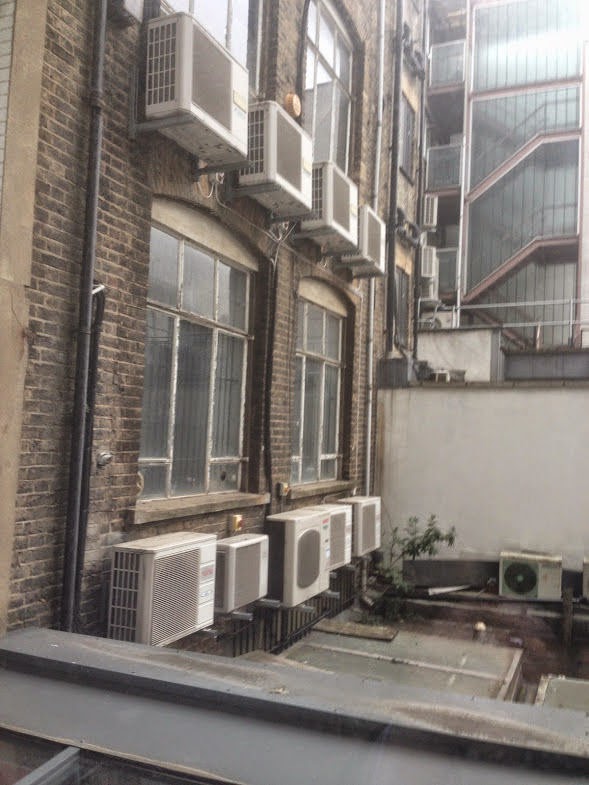I toyed briefly with the idea of electric underfloor heating, but soon concluded that being too hot was likely to be as much of a problem as being too cold (large windows that don’t open and in the sun all day). So…
mini-split air-con
…or as I think they are more properly known ‘air source heat pumps’ – so far as I understand it , they work the same way as a refrigerator:
A refrigerant is alternatively compressed to a liquid releasing energy (heat) into the surrounding area and then pumped to a low pressure area where it expands, extracting energy (heat) from the surroundings.
in a ‘mini-split’ system the compressor is outside of the building and, when in heating mode, the liquid refrigerant is pumped through coils of copper tubing in the external unit where it extracts heat from the air and evaporates into a gas. The indoor coils release heat from the refrigerant as it condenses back into a liquid. A reversing valve can change the direction of the flow to allow cooling inside the building.
the planet
Aircon had a terrible reputation for being noisy, inefficient and using larges amounts of ozone depleting gases. Over the past 20 years, increasingly rigorous environmental legislation has forced manufacturers to improve the technology and today – in Europe – it is no long allowed to use ozone depleting gases are much more efficient that previous incarnations of the technology.
How efficient?
well according to this site, they are amongst the least bad options if your only choice is electric.
How much?
a 2.5kw unit will easily cope in a small room like mine – they are between £400-£800 and modern units can be installed by a DIYer.
Which manufacturer?
According to the internet Mitsubishi Heavy Industry , Mitsubishi Electric and Daikin are the most reliable makes. I could not find a bad word about any of them, but there seems to be a common opinion that MHI have the edge on ME. I should say that this opinion – although oft stated – was never substantiated.
My hunch is that there is very little between the top manufacturers and the strong opinions are probably a reflection of the installers habits and relationships rather than any material difference.
As an aside, I read up a bit on the interesting history of the Mitsubishi – turns out all the mitusbishi brands are actually independently managed business (sometimes competing with each other) but with a common set of values and a common origin (Japan 1870)
The one consensus, backed up by a lot of easily discovered examples, is that LG manufactured units are flakey – a pity since they are one of the few companies that make an indoor unit that does not look like a giant white turd.
Anyhow, I was not entirely satisfied with my internet research so I did a bit of investigation from the office where I work in London. I am in the privileged position of being able to see the arse end of about 3 dozen small offices from my window and it turns out that at least 75% of them were sprouting monstrous carbuncles made by Fujitsu!

this research remains academic as the budget does not stretch to aircon at the moment – will have to be a 2015 purchase